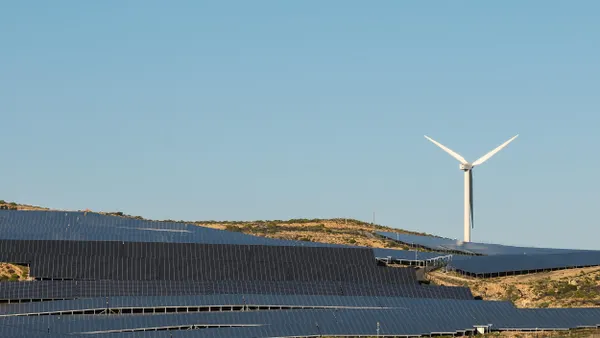Dive Brief:
-
A solar eclipse next month could shut down more than 9,000 MW of solar power during the roughly four hours when the moon will occlude the sun, Bloomberg reports.
-
The Aug. 21 eclipse will cast a 70 mile wide shadow in a path from Oregon to South Carolina, starting a little after noon Eastern standard time.
- California is expected to see the biggest impact from the eclipse because solar power on some days serves as much as 40% of the state’s load.
Dive Insight:
Grid operators in California and other regions began preparing for the solar eclipse months ago. The California ISO expects to buy more regulation service and more flexible ramping services during the eclipse to fill what could be a 1,365 MW increase in load as a result of obscured solar panels.
The ISO says output from large solar plants could drop by 70 MW a minute during the 82 minute eclipse and return at 90 MW a minute as the eclipse fades. However with mitigation measures, such as increased procurement of regulation services, CAISO expects reliability services will not be interrupted despite the burden placed on dispatchable resources by the eclipse.
The Texas grid operator, the Electric Reliability Council of Texas (ERCOT), expects the eclipse to dim about 600 MW of solar output. And the PJM Interconnection estimates the eclipse could affect as much as 2,500 MW of solar output. According to minutes from a recent PJM Operating Committee Meeting this month, North Carolina will likely experience the greatest impact to its solar output during the eclipse.
The last total solar eclipse in the contiguous United States was in 1979, according to NASA.













